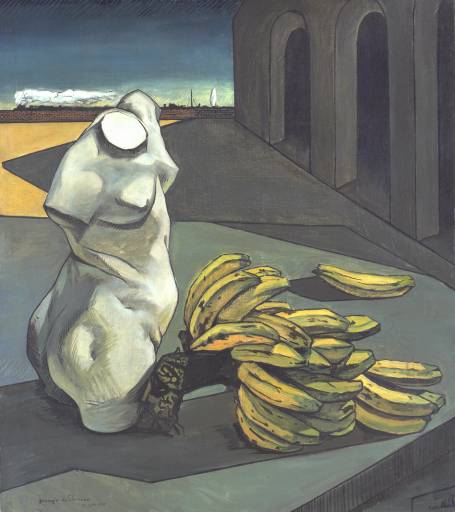Today being the fifty-fifth anniversary of the first post-war sale of bananas to the British public, this week’s picture is Giorgio de Chirico’s The Uncertainty of the Poet. No other painting of note contains so many bananas (twenty-three, in all); and in no other work has that once exotic fruit been made to seem more charged with mystery. Placed with evident but perplexing deliberation, next to a broken marble torso of Aphrodite, within an empty sunlit square, the inexplicable bunch of bananas seems at once familiar and very strange.
De Chirico painted the picture in 1913, at a time when he was striving to formulate the principles of what he called “Arte Metafisica”, or Metaphysical Art. He wanted, he said, not merely to reproduce external reality but to evoke the “strange sensations” that he often experienced in ordinary life - moments of “revelation”, as he termed it, which were occasioned in him by the most apparently mundane sights and sounds. De Chrico’s revelations came to him principally in the form of the melancholy and intense feelings that he often had when wandering alone in certain places. His principal sensation at such moments seems to have been a heightened belief that the world had no significance and no purpose - that in every aspect of its being it served simply to mock man’s pathetic need for order, for belief systems, for religious faith.
De Chirico experienced one of the first and sharpest of these gloomy epiphanies of alienation while out walking one day in Versailles. He was pondering the exuberant but ultimately nihilistic philosophy of his contemporary Friedrich Nietszche when suddenly he felt the “cold shiver, the profound and solitary joy of revelation”:
“I found myself in the courtyard of the palace at Versailles. Everything looked at me...

ITP 45: The Uncertainty of the Poet, by Giorgio de Chirico
25-02-2001

